Today’s post reports on two developments: how I came into more free plants and some progress fighting pests. Regular readers of this blog know I loathe spending money on annuals, so I was excited yesterday when I visited the Kauffman Gardens (where they’ve ripped out most of the mostly native bed along the north wall, I don’t know why). I discovered a bin full of discarded annuals in the parking lot.
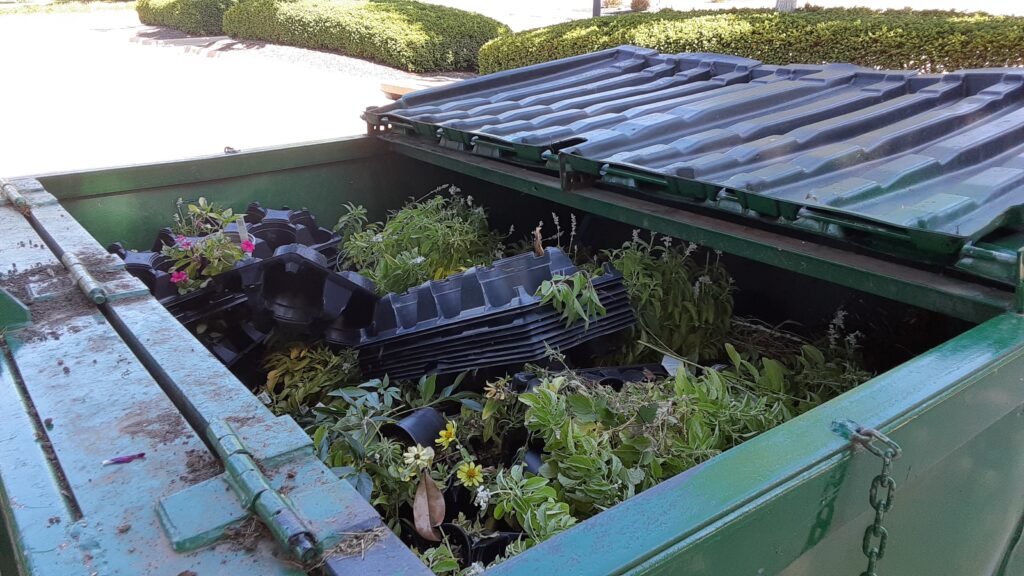
They were pot-bound and yellow-leaved, no doubt rejected for that reason, but other than that seemed fine. I filled a flat with zinnias, salvia, and flowering vinca and—because walking across the Plaza carrying a flat of flowers seemed eccentric, even for me—came back to get them later and helped myself to a second flat.
Why should I have all the luck? Wouldn’t it be nice if there were some plan for these, some way for anyone interested to take advantage of this bounty? An announcement someplace, or a volunteer willing to provide the necessary TLC and re-home them?
I planted them in the bare patch by our front sidewalk—a spot so hard-baked even weeds don’t grow. Voilà. Instant garden! They already look happy to be freed from their little pots.
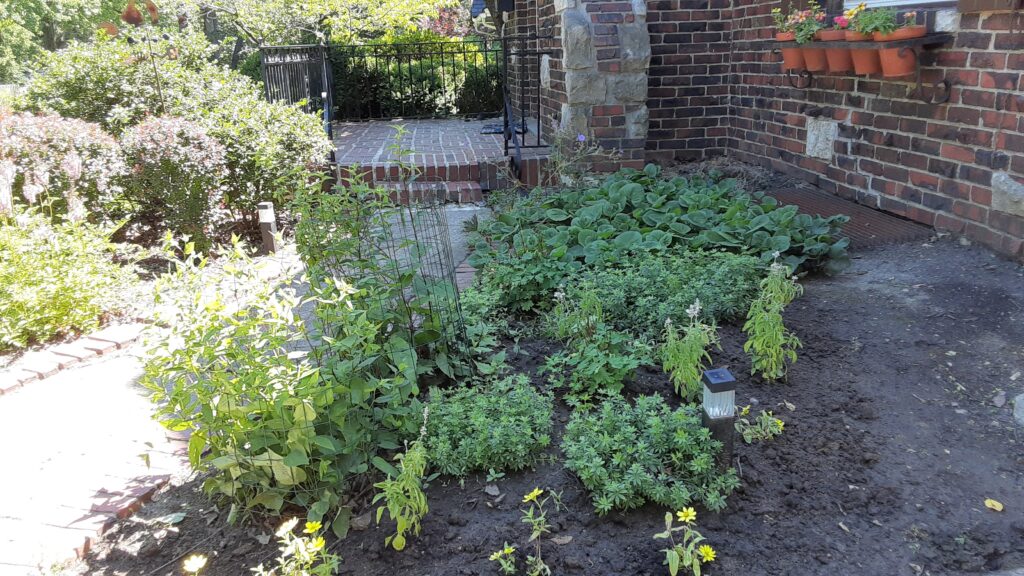
They’re not exactly the look I’m going for, but they’re better than the bare dirt. What is the look I’m going for? Right now I have the garden equivalent of a garage sale, with stuff I’ve found, stuff I’ve been given, stuff I’d just as soon throw away. I’ll have more to say about this as the fall planting season approaches.
I will say that just about everything I’ve sown from seed this year has been eaten by rabbits—which brings me to my next topic, pests. You may have read my earlier post about the reproductive cycle of rabbits. In our yard baby rabbits are like plastic balls on a trampoline, shooting in every direction. The current crop of kits are so tiny, they easily slip through the holes in the wire mesh I’ve put around everything and munch the plants down to stalks. They even ate the hyacinth bean, which was leafing out so nicely and twining around its trellis. I don’t know how they managed to get to this sunflower. They’re like Houdini.
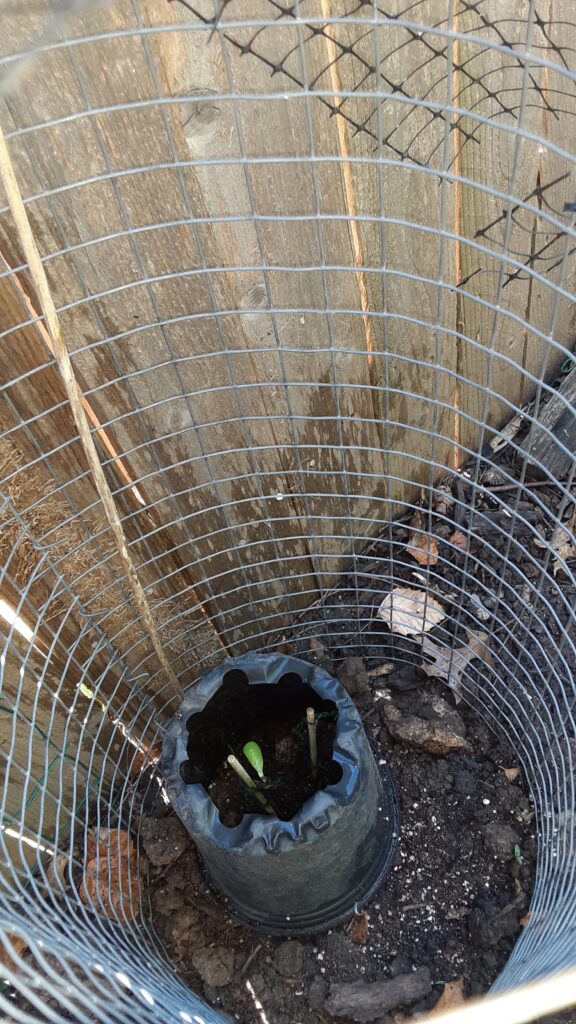
I’ve lost coneflowers, rudbeckia, lilies, marigolds and zinnias, phlox, larkspur, and asters. (Some of the damage may be due to chipmunks. I can’t tell.) Dousing plants with animal repellant hasn’t worked, as you can see from this photo.
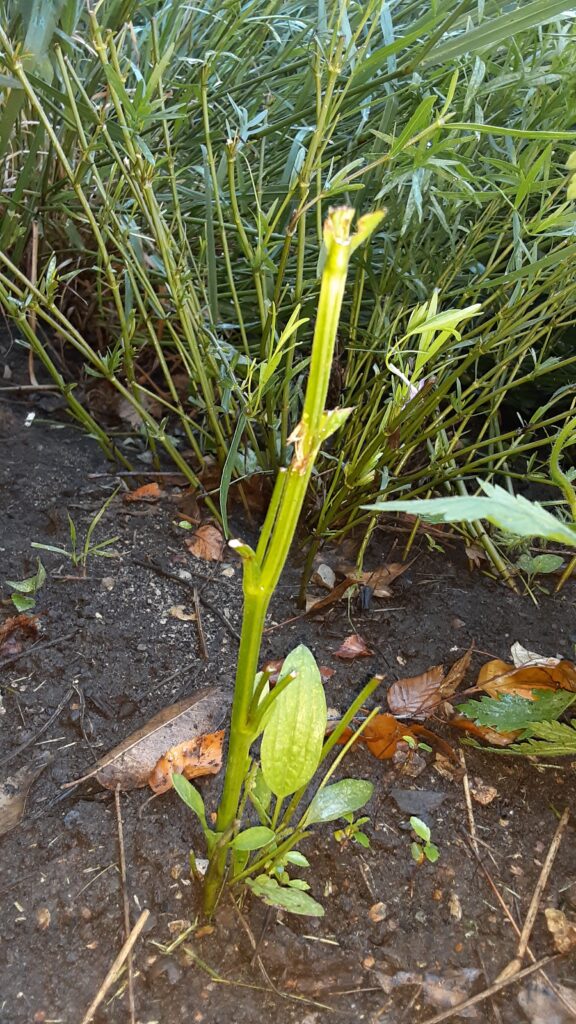
Yesterday I broke down and spent $30 on Rabbit Scram.
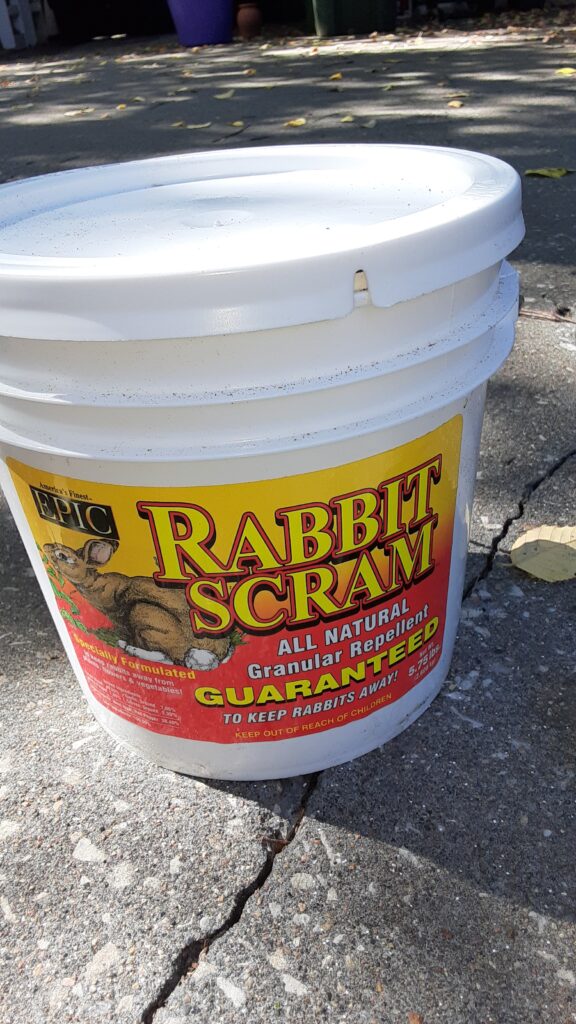
Apparently rabbits dislike this mix of dried blood, pepper and garlic, although chipmunks, squirrels, dogs, and flies seem attracted by it.
I haven’t seen a rabbit since I put it down. They were so plentiful before, I almost miss them. Sometimes I struggle to balance my desire to welcome little creatures into the garden with my equally strong desire to see plants survive. Posts on Facebook tell me others struggle with this dilemma, too.
Last week I wrote about the misery of Japanese Beetle season, and I’ll spare you photos of ones I’ve drowned in soapy water. So far that infestation doesn’t seem as bad as in previous summers. I’m reluctant to divulge this, but I tried an experiment that may have helped. Last fall, I was dismayed by the number of grubs I was finding. Little white crescents studded every shovelful of dirt, like blueberries in a muffin. I knew what they were.
Sometimes no-pesticide resolutions can be tough to keep. This is the time of year when lawn services apply grub control, because the adult beetles feeding on our flowers are also laying eggs, and the eggs turn into grubs. I have two unopened bags of Bug Blaster sitting my garage that I don’t want to use. Looking for alternatives, I learned about Milky Spore and parasitic nematodes. I decided to try grubHALT! from Gardens Alive, which contains BTG, “a naturally occurring soil organism that is harmless to people, pets, bees and birds.” I discovered it in Joe Lamp’l’s article Japanese Beetle Prevention and Control. I am not recommending it; I’m just saying I tried it.
Did it help? I think it did. The one grub I dug up yesterday when I was planting those zinnias reminded me how plentiful they were last fall. I’m picking tens of beetles off the hibiscus, grape, and astilbe—but not hundreds. Of course, I can’t get rid of them entirely. They fly in from other places. But so far, we’re holding steady. We don’t have the turf damage we’ve had in previous years, and we still have plenty of flowers. I think trimming off any beetle-damaged foliage is a good idea because I understand that some chemical in the beetles’ saliva attracts more to the spot.
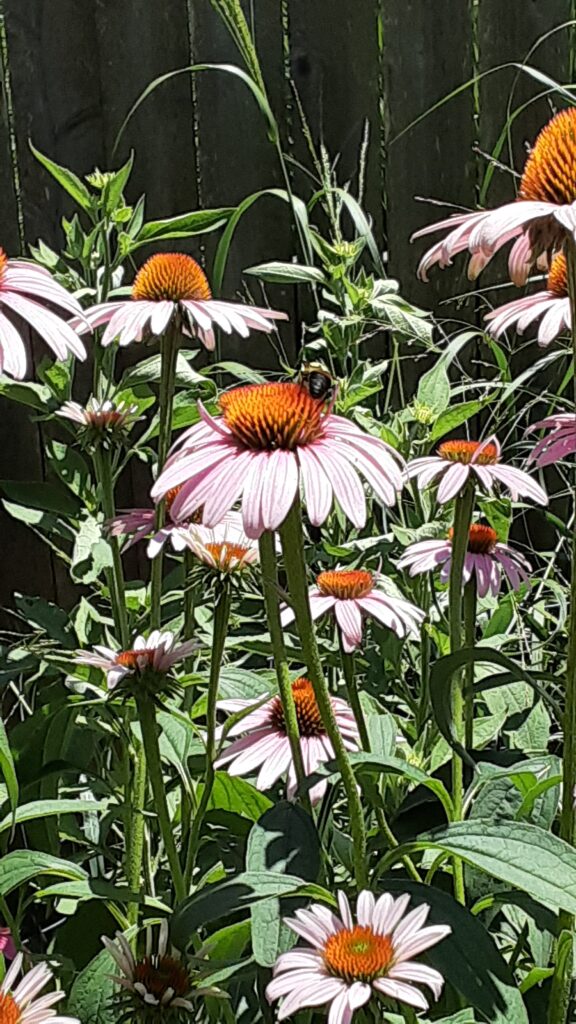
Wherever I’ve found beetles, I also find bees. This summer has been great for them, and for other insects. Maybe that’s a little cause for optimism? I’ve seen fireflies, hummingbird moths, cloudless sulphur butterflies, and Monarchs laying eggs. Everyone stresses the importance of accepting a few damaged plants, knowing that not-spraying saves more life in the long run. Ecology is is a long game. Evidence of changing attitudes is all around. Did you see the Rewilding Britain Landscape that won gold and the overall Best in Show at the RHS Chelsea Flower Show?
With a little encouragement, good ideas can spread.
I hope you all have a fun, safe Independence Day. Thanks for reading.
References
https://www.aphis.usda.gov/plant_health/plant_pest_info/jb/downloads/JBhandbook.pdf
joegardener.com/japanese-beetle-prevention-and-control/
